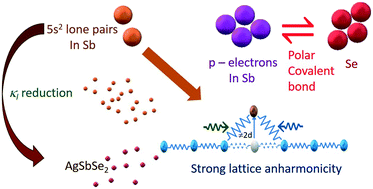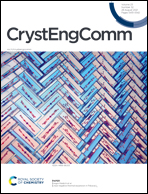Cation disorder and bond anharmonicity synergistically boosts the thermoelectric performance of p-type AgSbSe2
Abstract
AgSbSe2 is one of the important Te-free chalcogenides in I–V–VI2 semiconductors, showing attractive functional properties and enhancing the thermoelectric performance. Here we report the thermoelectric performance of the polycrystalline p-type AgSbSe2 nanostructured compound synthesized via a hydrothermal method followed by cold-press technique. In the as-prepared sample, the synergistic combination of low thermal conductivity (0.589 W m K−1) and high-power factor (3.3 μW cm K−2) has been observed to successfully boost the thermoelectric figure of merit. The cubic phase structure and disordered lattice of AgSbSe2 were confirmed by XRD and HRTEM analyses. The valence states of Ag+, Sb3+ and Se2− were confirmed from XPS. The presence of atomic-scale disorder results from Sb–Se bond anharmonicity because of the electrostatic repulsion between the charge of Se and the lone pair of Sb, as well as nanoscale grains coupled with strong Sb–Se bond anharmonicity. This allows for an effective phonon scattering, resulting in reduced thermal conductivity. The AgSbSe2 system offers promising thermoelectric properties to restore traditional metal tellurides for intermediate power generation. The possible transport mechanism along with lattice anharmonicity created by lone-pair electrons is proposed.

- This article is part of the themed collection: Crystal Engineering Techniques


 Please wait while we load your content...
Please wait while we load your content...